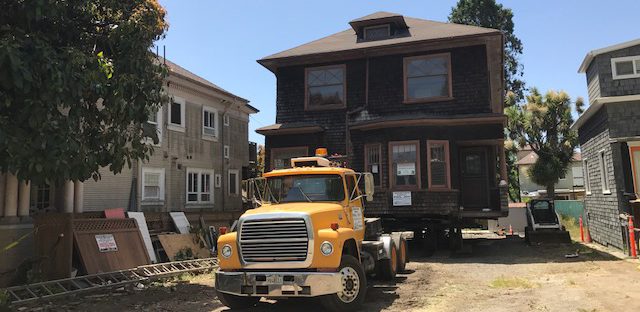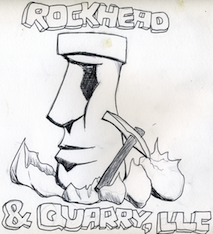Rockhead and Quarry LLC was incorporated by Dmitri Belser and Tom White in 2011. Starting back in 1983, we began restoring houses in both San Francisco and Berkeley, as well as remodeling homes for friends throughout the Bay Area.
Our younger son, Sabastian Belser, joined the company in 2013, providing property management for some of our rental properties. Our older son Elliott Belser has provided graphic design services to assist the company.
Our restoration philosophy is to restore houses, as much as is possible, to original condition. We do not take out bathrooms and kitchens because they are “outdated” but endeavor to make those spaces respectful of their heritage while repairing fixtures and making the systems up to date. We try to keep as much building material out of the landfill by re-using old trim, doors, windows and fixtures, and restoring (rather than replacing) cracked and broken plaster.
Living in a restored old house is an amazing experience, and an old house is more comfortable and welcoming than a new one. The house where we live still has its original 1907 kitchen, including the original cabinets in the pantry. The 1931 Wedgewood stove has been fully restored and works as well as any modern gas stove. The incredible woodwork throughout the house is shellacked and gleaming, and the house has original fixtures.
About Our Name
“Rockhead and Quarry” was one of the names of the company where Fred Flintstone worked (under his boss, Mr. Slate) in several episodes of the original “Flintstones” cartoon series. The Flintstones was a wonderful cartoon that was first aired by Hanna Barbera from 1960 to 1966.
Our love of old houses, and the fact that the houses we restore generally start out more like caves, made using Rockhead and Quarry the best choice for our LLC.
We recognize that using the name “Rockhead and Quarry” may be seen as appropriating the intellectual property of Hanna Barbera, but we don’t see it that way, and trust that they would not either. Using a name that was mentioned in a few episodes is our small homage to the genius that was the Flintstones. In fact, we have spent significant time not only watching the Flintstones, but encouraging others to watch, and we raised our sons on Fred and Barney. We also have spent an inordinate amount of time thinking about the show.
The Rise and Fall of the Flintstones
The earlier seasons of the Flintstones were nothing short of brilliant. Episodes like “The Flintstone Flyer”, “The Swimming Pool, “Monster from the Tar Pits” and “The Hot Piano” – in fact, all the episodes in Season One – are classics of comedy and animation.
The Flintstones was clearly a take off on “The Honeymooners”, a brilliant 50s sitcom filmed in Kinescope and starring Jackie Gleason and Art Carney. Despite the prehistoric setting, the concept was familiar: Wilma (Alice) was married to the childlike yet lovable (and large) Fred (Ralph). The foils were Barney (Ed Norton) and Betty (Trixie). Fred, like Ralph, was always scheming to get ahead in the world, but never met with the success he craved – but always had the love of his devoted wife.
The inherent sexism of the 50s and 60s shows deeply in both programs. The wives did not work, but the husbands supported the families, primarily in blue collar jobs. Fred was a bronto crane operator for the Slate Rock and Gravel Company (which in a few episodes was known as the Rockhead and Quarry Cave Construction Company). Ralph Kramden drove a bus, and Ed Norton was a sewer worker. Barney Rubble held several mostly un-named jobs, but had work both for Slate Rock and Gravel as well as working as a furniture repossessor (Season One, Episode Four), in which he had to repossess Fred’s television set.
Like most shows, later seasons began to fall away, but Season Two has many strong episodes, and Season Three has mostly classic stories. The birth of Pebbles near the end of Season Three started an unraveling of the show – much of the charm had been in Fred’s childlike interactions with the world around him, so making him into the role of a parent had a strong impact on the show. Later additions of poorly thought out characters, such as “Bamm-Bamm” in Season Four, “Hoppy the Hopparoo” in Season Five, and (worst of all) “The Great Gazoo” in Season Six all but sealed the show’s fate.
Season 6 was where the show jumped the shark, though of course that phrase had not yet come into the language. Our belief is that the true “jumping the shark” episode was Season Six, Episode 20, when Fred and Barney appeared in a play called “Romeorock and Julietstone” By this time, it appears the writers were so tired of the “rock” and “stone” gags that they merely appended the words onto the names of the Shakespeare characters.
In fact, we believe that the phrase “jumping the shark” should be replaced with a reference to this episode. One can easily imagine people saying “I don’t know what the writers of that show were thinking – they must have been totally Julietstoned when they came up with that idea!”
Despite the fact that the show deteriorated, as most shows do, over time, the pilot episode (“The Flagstones”) and the first few seasons are worth watching and owning. DVD sets of the show are available – in fact, the entire 166 episode set can be purchased in a “24 disc, stone age TV packaged set”, from Columbia House.

